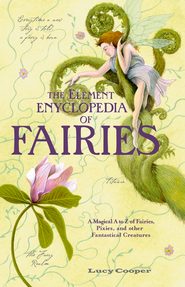скачать книгу бесплатно
Devas
(Also known as the “Shining Ones.”) Benevolent supernatural beings in Hindu belief. Some devas represent the forces of nature, while others represent moral values. In the Rigveda, the ancient Indian collection of sacred hymns, Indra is the leader of the devas.
See alsoApsaras (#ulink_692556b2-4a90-5103-9e1b-82533b4a40fe), Gandharvas (#litres_trial_promo).
Diana
In Roman mythology she is the goddess of the hunt, the moon, and birth, and is associated with wild animals, the wilderness, and the forest. She was said to dwell in the Forest of Nemi with the nymph Egeria. In Greek mythology she became identified with the goddess Artemis.
Diana is also a key figure in witchcraft, particularly the Italian witchcraft tradition Stregheria. Aradia: Gospel of the Witches (1899) describes Diana as the great spirit of the stars who made all men, giants, and dwarves, and relates how one night a poor orphan boy saw a thousand little white figures dancing under the full moon. When he asked them who they were, they replied:
“We are moon-rays, the children of Diana.
We are children of the moon;
We are born of shining light;
When the moon shoots forth a ray,
Then it takes a fairy’s form.”
Dinny Mara
(Pronounced dunya mara.) Manx merman. The dinny mara has a gentler temperament than the English merman. In Dora Broome’s story “The Baby Mermaid,” he is described as an affectionate father who played with his baby and gave her presents. This contrasts with the Cornish legend “Lutey and the Mermaid,” in which the mermaid of Cury herself was harmless enough, but feared that her husband would eat their children if she didn’t get home to feed him.
See alsoBen Varrey (#ulink_dcdd1ea3-30e4-50d0-969f-86d0545b01bd).
Direach, the
(Pronounced jeeryuch.) The Direach Ghlinn Eitidh is a type of fachan described in J. F. Campbell’s Popular Tales of the West Highlands (1860–1862). Fachans were particularly ugly creatures that had one hand protruding from their chest and a tuft of hair sprouting from the top of their head. The Direach was described as a giant woodcutter with one leg and one eye in the middle of his forehead.
Divs
(Or Deevs.) Demons of Persian mythology, who are in constant battle against the peris, the good spirits or fairies. According to the Koran, they are gigantic, ferocious spirits ruled over by the evil spirit Eblis. William Finch, in Purchas’ Pilgrims, describes them thus:
At Lahore, in the Mogul’s palace, are pictures of Dews and Dives with long horns, staring eyes, shaggy hair, great fangs, ugly paws, long tails, and such horrible deformity, that I wonder the poor women are not frightened.
See alsoBerkhyas (#ulink_63a8d904-5d21-5a5b-84d3-1093de95ec2d).
Djinn
(Also jinn, jinni, genie.) Shapeshifting spirits of Arabian mythology. There are many regional variations on the spelling; here djinn is used to indicate both singular and plural. Female djinn are named with the honorific title lalla.
Djinn are described in Thomas Keightley’s The Fairy Mythology (1828) as spirits formed from smokeless fire, or the hot, dusty Simoom wind that blows across the Sahara and the Arabian peninsula. This fire is their life force and will erupt from their veins if they are injured, reducing them to nothing but ashes.
They can appear as gigantic and terrifying beings, such as the evil spirit in the tale of “The Fisherman and the Djinn” in The Thousand and One Nights, who takes the form of an Ifrit, one of the classes of djinn, or in human forms of great beauty, although it is said that a djinn disguised in the form of a beautiful woman can be recognized by certain tell-tale signs: vertical pupils in the eyes, or the hooves of a goat or a camel instead of feet.
According to Islamic tradition, the djinn rebelled against the powers of good, like the Fallen Angels of Christian belief. Azazel grew up among the angels, but when he refused to bow to Adam, he was transformed into the fearsome Iblis, father of the Sheytans, or evil spirits, and led the djinn in battle against the angels.
Djin or Diju is the name the occultist Elephas Levi used to refer to the ‘sovereign’ of the elementals of fire, known as salamanders.
Beliefs about djinn vary from region to region. In Egypt, malignant djinn pelted travelers with stones and were wont to steal food and women. Zoba’ah, or “dust devils,” tall whirlwinds of sand in the desert, were said to indicate the path of a malevolent djinn
Вы ознакомились с фрагментом книги.
Для бесплатного чтения открыта только часть текста.
Приобретайте полный текст книги у нашего партнера:
